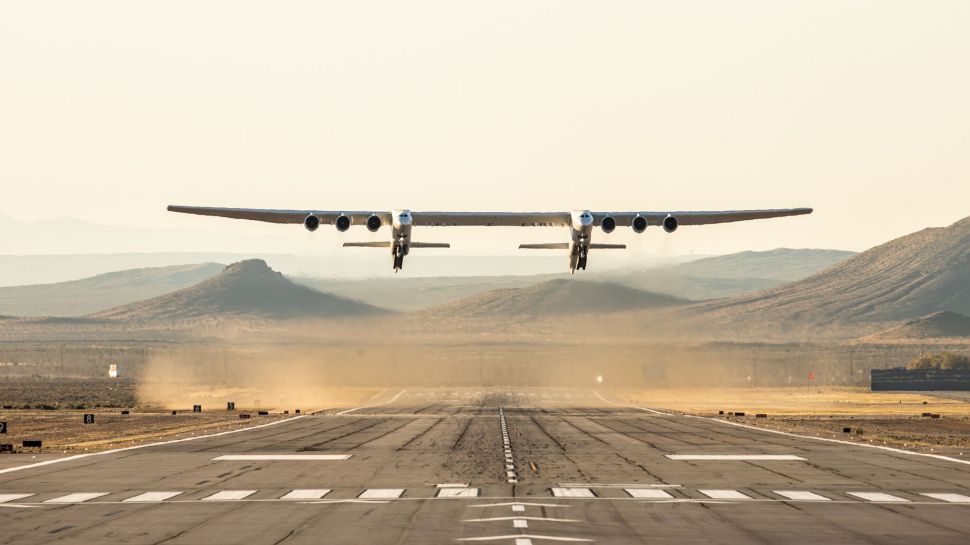Stratolaunch Successfully Completes Talon Vehicle Test, Nearing Powered Hypersonic Flight Attempt

Stratolaunch, the hypersonic test developer, has achieved a major breakthrough as it successfully completed a crucial separation test of its Talon vehicle from the Roc carrier aircraft over Vandenberg Space Force Base’s Western Range off California’s central coast. This achievement marks a significant milestone in the company’s journey towards the first powered hypersonic flight, which is expected to take place later this summer.
During the fourth captive-carry flight of the unpowered Talon TA-0 drop test vehicle, the mission accomplished primary and secondary objectives, including a clean release, stabilized flight, and landing in the water, according to Zachary Krevor, CEO and president of Stratolaunch. The long-awaited test has set the stage for Stratolaunch’s upcoming powered hypersonic flight attempt.
Originally planned months ago, the separation test was delayed due to range time restrictions and unfavorable weather conditions. Despite a setback in the previous attempt on April 1, where off-nominal reaction loads data prompted the cancellation, post-flight mission analysis indicated that the release would have been successful. The practice run proved valuable and provided an opportunity for Roc, the carrier aircraft, to operate within the targeted drop area while ensuring all systems were functioning correctly and interacting with the Pacific test range telemetry systems.
The Talon vehicle used in the May 13 separation test, weighing around 7,000 lb. and measuring 28-ft. long with a 14-ft. span delta wing, represented a full-scale hypersonic vehicle. The release occurred on the second pass of the Roc along a northwest-southeast racetrack pattern aligned parallel to the coast. Although Stratolaunch has not disclosed specific separation conditions, it confirms that they closely align with the target speed and altitude parameters for the upcoming hypersonic flight test with the second vehicle, TA-1, expected to take place in late summer.
Following the separation, the Talon vehicle glided for approximately 2.5 minutes before making a stable landing in the ocean. Telemetry data indicated that the fully autonomous vehicle performed as predicted, exhibiting expected handling qualities and matching earlier wind tunnel and computational fluid dynamics analysis.
Stratolaunch recovery crews are actively working to salvage parts of TA-0 for further analysis. The carrier aircraft, piloted by Evan Thomas and Dave Fedors, with Brad Schab as the flight engineer, safely returned to land at Mojave Air & Space Port at 1:10 p.m. PDT.
Looking ahead, Stratolaunch is now focusing on the preparations for hypersonic flights with TA-1. The vehicle is currently undergoing vehicle-level testing, followed by integration tests with Roc. Additionally, hot-fire ground runs of the Hadley engine continue at Stratolaunch’s Mojave test site, with plans to integrate the same engine into TA-1 after successful tests.
The assembly work for follow-on vehicles, TA-2 and TA-3, is also progressing. These reusable vehicles are designed to recover for landing at Vandenberg Space Force Base after Mach 5-plus flights. While TA-2 is undergoing integrated systems tests after full assembly, the structure of TA-3 is nearing completion, according to Krevor.
Simultaneously, rehabilitation work on runway 12-30, the longest runway at Mojave Air & Space Port used for Roc operations, is scheduled to commence at the end of May and continue through early July. The runway will be closed for 42 days, with limited closures of other runways, 8-26 and 4-22, occurring during the same period. Another brief closure of runway 12-30 is planned in early August for the application of new pavement markings.
Stay updated as Stratolaunch progresses towards its historic powered hypersonic flight attempt later this summer, as it continues to push the boundaries of aerospace technology and innovation.
